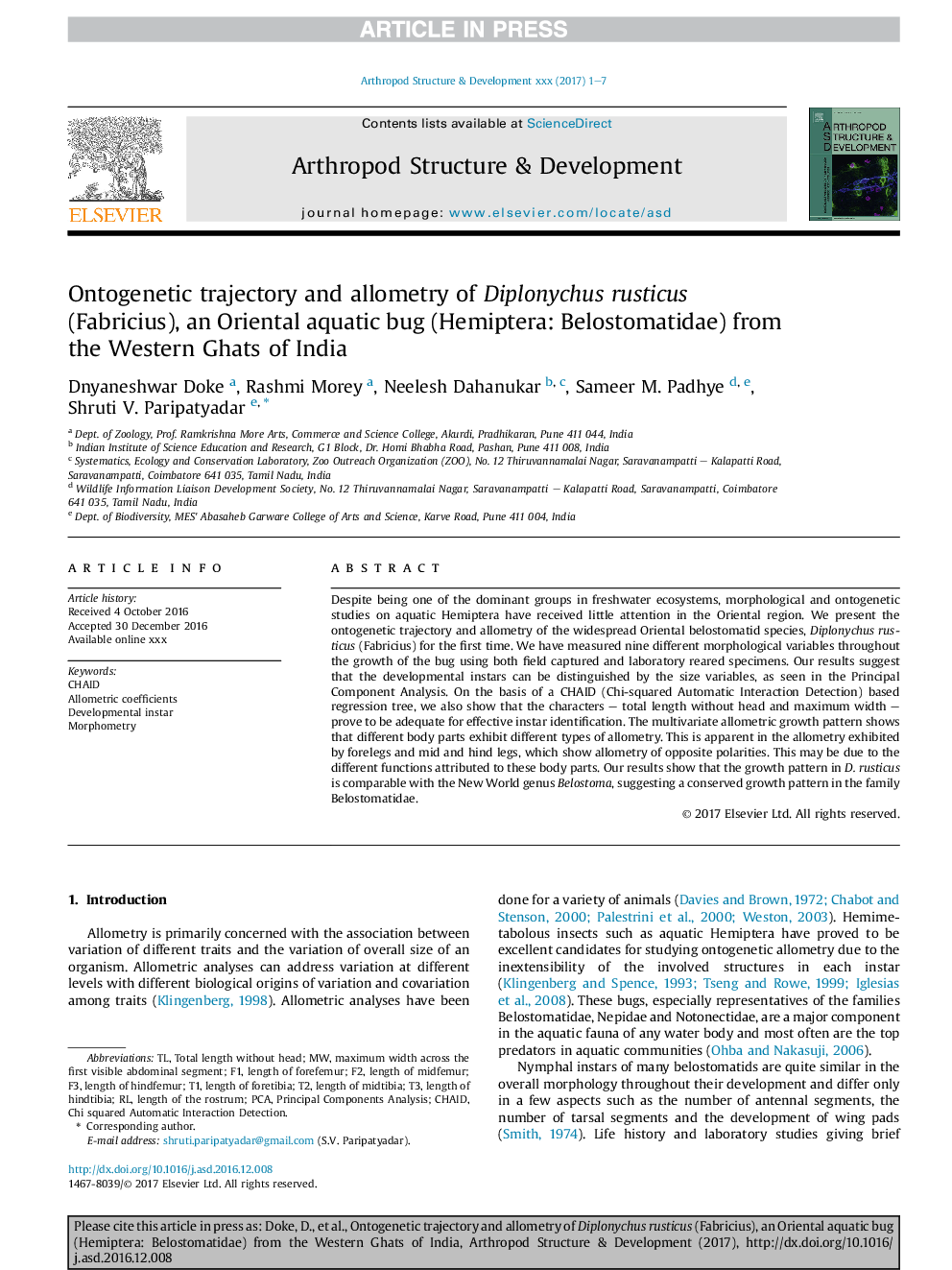| Article ID | Journal | Published Year | Pages | File Type |
|---|---|---|---|---|
| 5585060 | Arthropod Structure & Development | 2017 | 7 Pages |
Abstract
Despite being one of the dominant groups in freshwater ecosystems, morphological and ontogenetic studies on aquatic Hemiptera have received little attention in the Oriental region. We present the ontogenetic trajectory and allometry of the widespread Oriental belostomatid species, Diplonychus rusticus (Fabricius) for the first time. We have measured nine different morphological variables throughout the growth of the bug using both field captured and laboratory reared specimens. Our results suggest that the developmental instars can be distinguished by the size variables, as seen in the Principal Component Analysis. On the basis of a CHAID (Chi-squared Automatic Interaction Detection) based regression tree, we also show that the characters - total length without head and maximum width - prove to be adequate for effective instar identification. The multivariate allometric growth pattern shows that different body parts exhibit different types of allometry. This is apparent in the allometry exhibited by forelegs and mid and hind legs, which show allometry of opposite polarities. This may be due to the different functions attributed to these body parts. Our results show that the growth pattern in D. rusticus is comparable with the New World genus Belostoma, suggesting a conserved growth pattern in the family Belostomatidae.
Related Topics
Life Sciences
Agricultural and Biological Sciences
Insect Science
Authors
Dnyaneshwar Doke, Rashmi Morey, Neelesh Dahanukar, Sameer M. Padhye, Shruti V. Paripatyadar,
